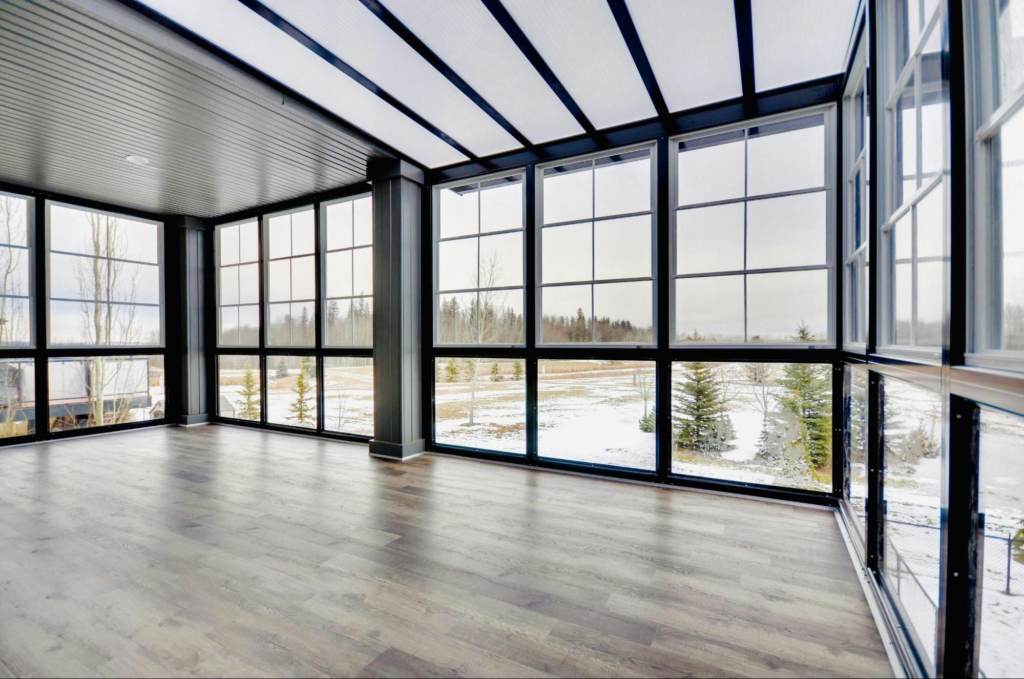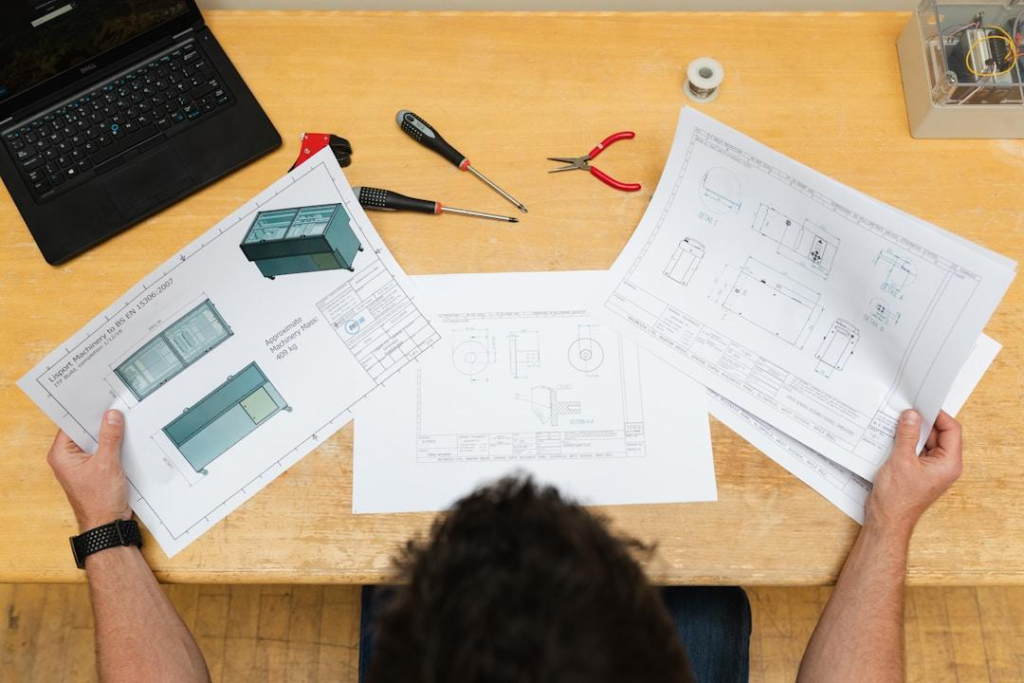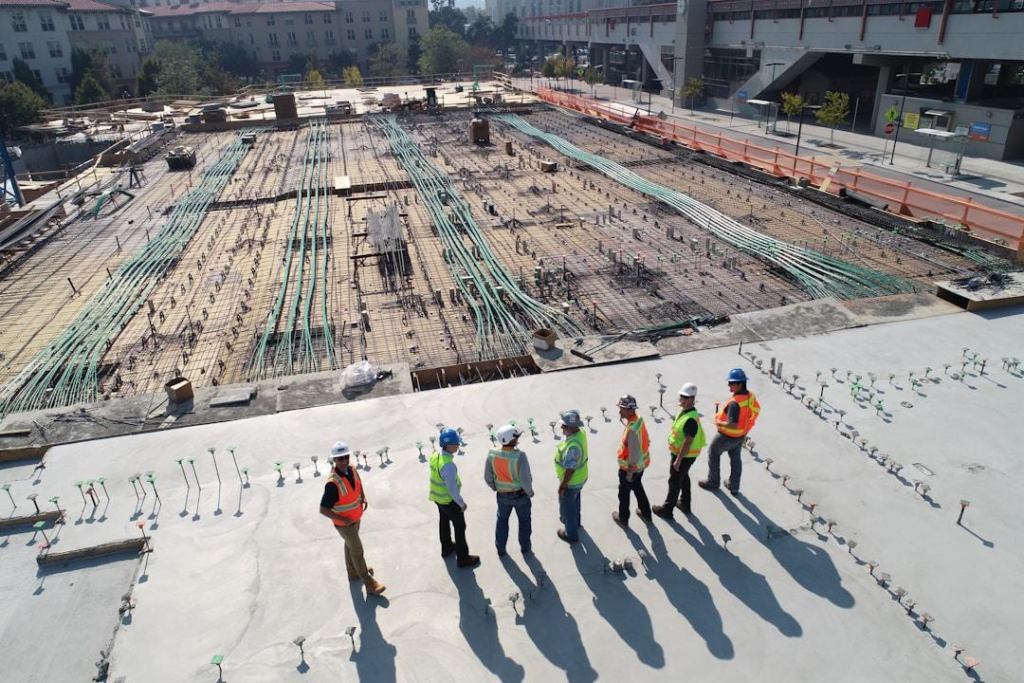
Constructing a new office space is multifaceted, blending legal compliance with architectural vision and operational function. From the initial steps of securing permits to the fine craftsmanship of interior design, each phase requires meticulous attention to detail and adherence to regulatory standards. The journey from concept to completion is paved with decisions that can shape productivity and define the corporate culture of its inhabitants. Keep reading to uncover the pivotal tasks that form the building blocks of a professional, modern workspace.
Table of Contents
Navigating the Permit Process: Essential Steps and Considerations

Embarking on constructing a new office space begins with the critical phase of acquiring the necessary permits. Business owners must engage local authorities early to understand zoning laws and receive approval for their building plans. This initial step lays the groundwork for a seamless construction project and sets the stage for subsequent approvals.
Securing a building permit entails submitting detailed blueprints that comply with local building codes and regulations. These stringent criteria ensure the safety and suitability of the proposed construction site. The complexity of meeting these standards can vary widely depending on the location and scope of the project.
While navigating the labyrinth of permit applications, owners must maintain a clear line of communication with the involved parties. From architects and contractors to city planners and building inspectors, collaboration is vital to avoid delays that can derail construction timelines and inflate budgets.
Upon receiving the green light, careful documentation of the permits is essential. This safeguards against legal issues during the build and expedites the final stages of inspection and approval, bringing the vision of a custom-designed office space closer to reality.
Construction Phase: Building the Framework and Infrastructure

The groundwork for a new office space sets the tone for the entire project. Teams work diligently to erect steel frameworks that form the skeletons of future workplaces. During this construction phase, the precision of engineering meets the practical demands of architectural design, ensuring both resilience and aesthetic appeal.
As walls rise and floors are laid, a complex electrical and plumbing infrastructure network weaves through the structure. Skilled electricians and plumbers coordinate to integrate these essential systems discreetly, allowing for a seamless blend of functionality and design within the building’s interior spaces.
Meanwhile, careful attention is paid to selecting and preparing lighting fixtures. Sourcing from a dedicated lighting showroom may provide options that align with the space’s intended use and desired ambiance. Such an approach underscores the importance of lighting in shaping an office’s character and work environment.
Concurrently, external elements such as windows and doors are fitted, enveloping the building in a protective yet inviting shell. These fittings not only define the office’s interface with the outside world but also play a pivotal role in regulating natural light and airflow, contributing significantly to the comfort of future occupants.
Interior Design and Final Touches: Creating a Functional and Aesthetic Workspace
The culmination of constructing a new office space lies within the interior design and final touches phase. This stage transforms a structural space into a hub of productivity and creativity. Key decisions during this period can significantly impact employees’ daily operations and well-being.
Selecting the right furnishings is critical, with office desks for professionals being a foundational element of the design. Thoughtfully chosen, they combine ergonomic benefits with visual appeal. Their placement also plays a significant role in determining the flow of movement and collaboration within the workspace.
Lighting selections are just as pivotal, shaping the atmosphere and functionality of the environment. Strategically placed fixtures and natural light considerations can dramatically enhance the mood and energy of the space, catering to the intricate tasks at hand.
Finally, incorporating branding elements and personal touches adds character and a sense of identity to the office. Carefully curated art pieces, brand colors, or a feature wall can create a lasting impression on employees and visiting clients, allowing the business’s ethos to resonate throughout the office.
Altogether, constructing a new office space is a comprehensive endeavor that requires careful planning, collaboration, and attention to detail at every phase. From securing permits to the final design touches, each step is crucial in creating a functional, aesthetically pleasing, and productive work environment that reflects the company’s identity and values.



